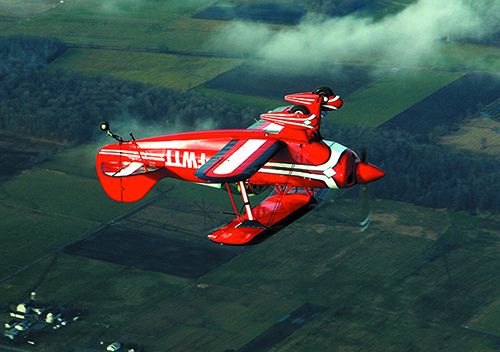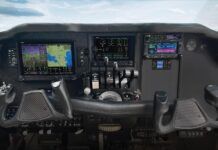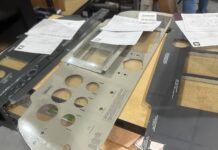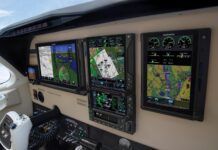We’ll digress for just a moment. As of this writing, much of the country is sheltering at home while we deal with the challenges of COVID-19. We’re hearing from pilots via email and social media who are kicking themselves for not pulling the trigger and taking the aerobatic instruction they’d always wanted. They’d procrastinated and now they couldn’t—at least for a while—and they swore that when things opened up again, they’d go for it.
They were learning one of the hard truths of aviation—if there’s a chance to do something way cool, a lot of fun and that sharpens the skills, grab it. Too often, the opportunity is fleeting.
LISTEN TO YOUR GUT
You know that you’ve been thinking that your flying is too often plain vanilla. Deep inside you know that you want to strap into a Decathlon to explore the real third dimension of flight. You want to pull back on the stick and apply a little Vitamin G to your life. You don’t want to wind up in the assisted living facility sucking on your gums and bemoaning the adventures you didn’t have. It’s time to stop with the procrastination, grab a handful of stick, put it to the stops and make the world revolve around you.
Besides, stalls give you the heebie jeebies and if you want to get to where they don’t bother you at all, an aerobatic checkout will almost certainly do it. It’s our considered opinion that in 10 or fewer hours, aerobatic dual will increase your level of pure stick and rudder skill—and your confidence—more than any other flight instruction you’ll ever take.
WHAT’S INVOLVED
We’ll start with the obvious—aerobatics involves big pitch and speed changes, which means G loads on the airframe. Done correctly, basic loops, rolls and spins rarely involve more than four positive Gs and one negative. That’s not far from the certification limits of a normal-category airplane. The problem is that when you make a mistake—and you will—it’s not unusual to blow through those G numbers, and redline airspeed, in a big hurry. Yes, pilots have pulled the wings off of normal-category airplanes. And our general aviation fleet isn’t getting any younger. We cannot emphasize too strongly that if you’re going to learn to do aerobatics, do it in an airplane certificated in the acrobatic category—and take instruction from a CFI who has been trained to teach aerobatics. DIY aerobatics has qualified too many pilots for a Darwin Award.
FINDING A SCHOOL
Taking aerobatic training may mean that you get to travel. To find the right school we recommend going to the International Aerobatic Club’s website (www.iac.org) and checking for schools in your area. We also suggest talking to pilots you know and respect as well as inquiring on aviation social media sites for training recommendations. To start with, a reputable flight school that offers aerobatic training should be able to provide you with a description of the course it offers, the type of airplane(s) used, the qualifications of the instructor(s) and confirmation that the school provides parachutes.
Our survey of schools offering specialized aerobatic training revealed that courses varied in length from five to 10 hours, with costs from $1600 to nearly $6000 depending on the number of hours, the type of aircraft used and the instructor.
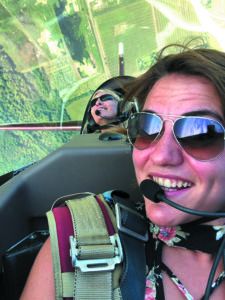
Before you make a final decision on a school, spend some time talking with the instructor you’ll fly with to see what is expected of you, what you can expect to learn and get a feel for whether there’s a match. If you weigh over 200 pounds you should also make sure that the school airplane has the useful load needed to carry you, the instructor, parachutes and enough fuel for the lesson and reserve. While aerobatic-category airplanes are tremendously strong, many have a limited useful load. Putting it bluntly, you don’t want to do aerobatics over gross.
CONCENTRATED TRAINING
We recommend doing your training in a concentrated manner to maximize knowledge retention between flights. We observed that most schools wanted to schedule the student to go straight through in two to four days (depending on the specifics of the course). Some encouraged students to make the training a part of a family vacation and one—Greg Koontz (www.gkairshows.com)—ties in the training with a bed and breakfast on the airport. (Koontz, in conjunction with the IAC, also offers an aerobatic instructor course scholarship—details are on the IAC website.)
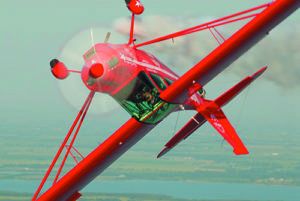
Every pilot we’ve spoken to about aerobatics is concerned about nausea during training—with good reason. Looping, rolling and generally pulling Gs—while being uncomfortable/uncertain about the whole thing—means that most pilots will develop some discomfort. The aerobatic instructors we know are fully aware of the situation and build in the process of getting used to truly moving in the third dimension into their courses. Put simply, we do aerobatics for fun. If we’re in a situation where we’re focused on not involuntarily redecorating the cockpit, we’re not having fun—and we’re not learning. Plus, we’ve also read the aeromedical literature that shows that a pilot who stops doing aerobatics when it gets uncomfortable rapidly builds a tolerance and stays comfortable longer the next time. The pilot who tries to be Joe Ironjaw, power through the discomfort, loses it and does the technicolor yawn will have a lower tolerance the next time.
OF COURSE I’M NERVOUS
Of course you’re going to be nervous about doing something new in an airplane. Your instructor will know it and should talk with you openly about strategies for dealing with it (if not, find someone else to fly with). In general, don’t starve yourself, eat normally, but not a large portion prior to flight. Don’t show up with a hangover. Honestly tell your instructor how you feel during the lesson. Stop when it starts to feel uncomfortable, land and take a break. You’ll be ready to go again in two or three hours and your tolerance for maneuvering and Gs will have increased.
AIRPLANES
We’re fortunate to have a big selection of aerobatic airplanes at flight schools across the country. The cost varies directly with the power and capability of the airplane. The good news is, taking primary aerobatic instruction in the lower-power aerobatic airplanes is not only less expensive than the high-performance machines, it requires you to work harder to do the maneuvers well and, in our opinion, helps make you a better aerobatic pilot. It also prepares you well to handle upsets or unusual attitudes in the airplanes you ordinarily fly.
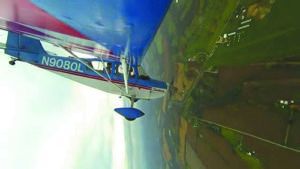
At the bottom end of the purpose-built aerobatic spectrum is the Cessna 150/152 Aerobat. It’s a seriously beefed-up 150/152 with the same, small engine. It is among the best of all akro airplanes at snap rolls and spins.
Next in line is the Citabria and Decathlon line. All are tandem-seat tailwheel birds, and excellent tailwheel trainers. The Citabrias range in power from 115 to 160 HP and have fixed-pitch props. Decathlons have the same fuselage but a wing with a symmetrical airfoil, constant-speed prop and engines ranging from 150 to 210 HP.
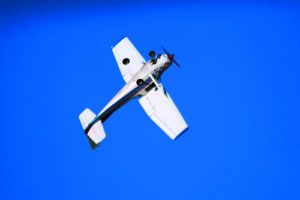
We like the line because of the stick control and the pilot sitting in the center for rolling maneuvers. Some of the Citabrias and all of the Decathlons have inverted fuel and oil systems, so the engine continues to run when inverted. All but the 210-HP Xtreme Decathlon have heavy ailerons and a modest roll rate, so a pilot has to use some finesse to do the maneuvers well.
The 180-HP Great Lakes biplane has an inverted fuel and oil system and is flown solo from the rear seat. We like open-cockpit aerobatics and the Great Lakes does them reasonably well. 180 HP is only modest power for the high-drag airframe so energy management must be learned early.
At the top end of the aerobatic school trainer spectrum are the two-place Pitts Special S-2 series that took the aerobatic world by storm in the 1970s with their vertical capabilities and seemingly effortless ability to fly any maneuver and the Extra line of monoplanes that appeared in the 1990s and made the Pitts line look stodgy.
A not so tongue-in-cheek warning: Starting your aerobatic training in a Decathlon and finishing in one of the astonishingly nimble Extras may cause addiction to the sport.
While very few flight schools use former military aircraft as aerobatic trainers, they do exist—or you may own one and want to learn aerobatics or polish the skills you now possess. A number of aerobatic schools will train in the customer’s airplane. For help finding training for antiques and warbirds we recommend contacting the IAC, Antique Airplane Association (AAA) (www.antiqueairfield.com) and the EAA’s Warbirds of American (www.warbirds-eaa.org).
Finally, there are a lot of homebuilts that are aerobatic and many, notably in the Vans RV series, do the maneuvers well. We recommend reaching out to the type club for your type machine to find experienced, qualified instructors.
COURSES
Our survey of aerobatic flight schools revealed that most offered a two-day, approximately five-hour, basic aerobatics course. The price ranged from $1700 in a Cessna Aerobat to $2595 in a Decathlon.
Several schools also offered more advanced courses with a total of eight to 10 hours in flight. Costs we saw ranged from $2500 to $5695 and were airplane dependent.
We particularly liked the approach taken by AeroDynamic Aviation (www.aerodynamicaviation.com) in the south San Francisco Bay Area. Chief instructor Jen Watson told us about their 10-hour course in either a Citabria 7KCAB or 150-HP Decathlon 8KCAB. It includes virtually all of the maneuvers the airplane is capable of performing and is tailored for the reasons the pilot wants to fly aerobatics, such as moving into competition, flying recreational aerobatics for pure enjoyment, general skill improvement or a combination of the above. In addition, once the checkout is complete, the pilot can rent the aircraft and fly solo aerobatics. That is not the case at all schools we surveyed.
All aerobatics are made up of three maneuvers: the loop, roll and snap roll. We think an aerobatics course should include the following (assuming the particular airplane is approved for the maneuver): loops; aileron, slow, snap and barrel rolls; spins (with emphasis on the whys of spins, inadvertent entries and how to recover); Cuban 8; reverse Cuban 8; Immelmann turn; split S; Hammerhead turn; cloverleaf (four loops with a quarter roll going up or coming down); avalanche (loop with a snap roll on top); and inverted flight and turns. The training, in our opinion, should include recovery from botching each maneuver, upset recovery in general and how and when to unload the wing and roll the airplane upright.
Finally, we think that the school should have established a hard and fast “floor” altitude below which they will not do aerobatics. The FARs set 1500 feet AGL. We found only one school that would go that low when giving dual. The majority said that the minimum altitude for completing recovery from any maneuver was 3000 feet AGL. They generally started maneuvers at 4000 to 5000 feet AGL.
Catherine Cavagnaro, proprietor of Ace Aerobatic School (www.aceaerobaticschool.com) in Suwannee, Tennessee, told us that for the first few spins with a student she wants to recover no lower than 4000 feet AGL. Cavagnaro, a mathematics professor at the University of the South, has done 60-turn spins in her school’s 152 Aerobat—there are videos on the internet—and gives specialized two-hour spin courses.
She also installs extra inclinometers across the panel of the Aerobat to show students that the displacement of the “ball” in a spin is a function of where it is mounted on the airplane, so it will not give information for rudder input to recover from a spin (the little airplane in the turn coordinator, however, does show the direction of rotation of the spin).
Cavagnaro has her aerobatic student fly some maneuvers while looking at the instruments (but not under the hood) to show how the gyros react when they hit their limits and tumble.
GETTING STARTED
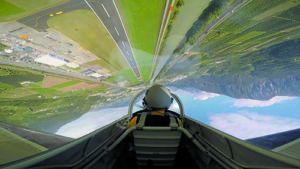
Virtually none of the schools we surveyed said that they assigned homework for the student to complete before the first lesson. Patty Wagstaff told us that the most important thing is for the student to start aerobatic training with an open mind and a willingness to learn. “Aerobatics is about feel—sensing how the controls feel at all different speeds and G loadings.”
Greg Koontz wants his students ready to learn “three-dimensional thinking.”
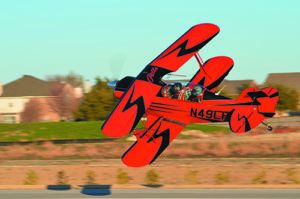
We recommend that you show up for your first lesson current in the airplane you normally fly. This is not the time to spend money knocking the rust off of your basic skills. Nevertheless, plan on having the bad habits you’ve developed uncovered and corrected.
You are there for fun, so if things start coming at you too fast, say so, and slow down the pace. We like Jen Watson’s approach at AeroDynamic. She installs a GoPro camera for video and audio of the lesson. Her comment to us was that the maneuvers can seem to flash by and it can be tough for students to understand what is going on and what control inputs are needed in a matter of a few seconds. Looking at the video while listening to the commentary seemed to help her students.
If you are nauseated, stop the lesson—you’re not having fun and you’re not learning. Take a break and come back to it after an hour or so.
THE TAKEAWAY
What should you come away with from an aerobatic course? You will not be a competition aerobatic pilot, but you’ll have a solid start on it if that’s your goal. You’ll be able to do most of all the basic and some of the advanced aerobatic maneuvers reasonably well and safely—and you’ll be able to recover from a botched maneuver. In our opinion, your level of pure airmanship will skyrocket.
Your landings will immediately improve. You’ll no longer be worried about inadvertently stalling the airplane and you’ll be willing to put the controls to the stop to make the airplane go where YOU want it to go. If you do have an upset or unusual attitude in a normal-category airplane, the chances are that you’ll know what to do to recover and do it successfully.
You’ll have broadened your aviation horizons and discovered some intensely fun flying—and, as Patty Wagstaff told us, you may find yourself getting into a very expensive hobby.

